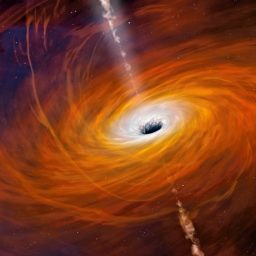Coffee talks
Friday 13/05/2022 @ 11:30, On-line - https://inaf-it.zoom.us/j/7107216114
Sarah White (Rhodes University), "New insights into active galaxies, via their radio emission"
Radio observations allow us to identify a wide range of active galactic nuclei (AGN), which play a significant role in the evolution of galaxies. However, when it comes to studying their properties as a function of redshift and/or environment, the most-detailed studies tend to be limited by small-number statistics. In the first part of this talk, I will describe the G4Jy Sample (White et al. 2020a, 2020b; https://github.com/svw26/G4Jy) -- a collation of the brightest radio-sources in the southern sky (Dec. < 30 deg) -- whose bright emission is detected at low radio-frequencies using the Murchison Widefield Array. This instrument is the precursor telescope for the low-frequency component of the Square Kilometre Array, and allows us to select radio galaxies in an orientation-independent way (i.e. minimising the bias caused by Doppler boosting, inherent in high-frequency surveys). 140 G4Jy sources have been observed using Open Time on MeerKAT (PI: White; Sejake et al., in prep.), and I will also describe follow-up using ATCA, the VLA, and SALT. With over 10 times as many sources as the best-studied, low-frequency radio-source sample that is optically complete (the revised Third Cambridge Catalogue of Radio Sources; 3CRR), the G4Jy Sample will allow models of powerful AGN to be tested more robustly. For the remainder of my talk, I will present analyses of radio emission from ‘radio-quiet’ AGN (White et al. 2015, 2017; Namane et al., in prep.). Being at low radio-luminosities, it has been assumed that their emission is dominated by star formation. However, using multiwavelength data, we find controversial evidence that black-hole accretion makes a significant contribution to their total radio emission. These studies have important implications for modelling AGN feedback, and for determining the accretion and star-formation histories of the Universe.

